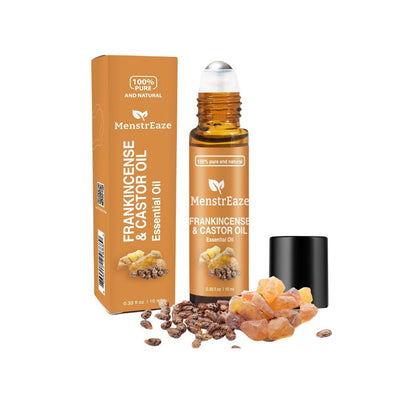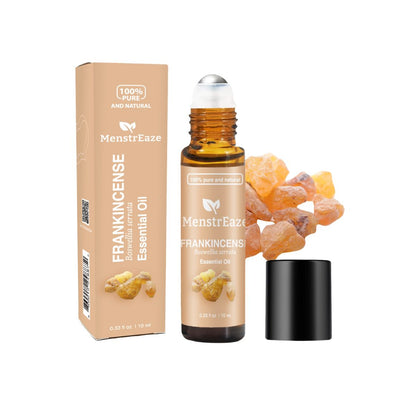For over five millennia, the fragrant gum resin known as frankincense has captivated civilizations across the globe. Its rich history intertwines with religious practices, medicinal applications, and even cosmetic uses, leaving an indelible mark on human culture [1]. From its revered status as one of the gifts presented to the infant Jesus in Christian tradition to its designation as "the sweat of the gods" by ancient Egyptians and its employment in religious ceremonies and funerals by the Romans, frankincense has consistently held a place of high esteem [1]. The very existence of the historical "Incense Road," which connected the Arabian Peninsula and the Horn of Africa with the Mediterranean World, Egypt, and China, underscores the profound economic and cultural significance of this aromatic treasure [1]. This enduring legacy naturally leads to a fundamental question: what does frankincense smell like? Join us as we delve into the captivating world of this ancient aroma and explore the nuances that make it so unique.
A Symphony of Scents: Describing the Core Aroma
Attempting to encapsulate the essence of frankincense's aroma is akin to trying to hold onto a fleeting memory – it is a complex and multifaceted experience that unfolds gradually, revealing different layers and characteristics [10]. However, through centuries of appreciation and contemporary fragrance analysis, a rich tapestry of scent descriptors has emerged. At its heart, frankincense often presents a woody character, reminiscent of fresh pine needles or the comforting scent of tree bark [1]. This foundational note is often accompanied by a comforting warmth, creating a soothing and tranquil ambiance [1]. Many also detect a subtle sweetness, sometimes described as a delicate, honey-like undertone that adds depth without being overpowering [1].
The very nature of frankincense as a tree resin imparts a deep, resinous quality, often described as balsamic, hinting at its origin as the lifeblood of ancient trees [1]. This resinous aspect often intertwines with an earthy note, grounding the fragrance and evoking a sense of connection to nature [1]. Adding another layer of complexity is a distinct piney facet, a fresh and slightly sharp note that can recall the invigorating scent of pine sap or the herbaceous aroma of rosemary [1]. Furthermore, a touch of citrusy brightness, often likened to hints of lemon or orange, can uplift the overall profile, adding a vibrant and refreshing quality [1]. Subtle peppery or spicy undertones can also emerge, adding an intriguing complexity to the aroma [1]. When burned, frankincense often releases a characteristic smoky fragrance, further deepening its connection to ancient rituals [10]. Finally, the term balsamic frequently appears, encompassing the resinous, sometimes slightly sweet and woody aspects of its scent [1]. This intricate combination of scent characteristics often results in a balanced and profoundly spiritual aroma, one that has resonated with humanity for millennia [1]. The sheer variety of these descriptors underscores the complexity of frankincense and how different individuals might perceive its many aromatic facets. Furthermore, the recurring association with "spiritual" qualities highlights a cultural link between the scent and elevated states of mind, likely stemming from its long history of use in sacred contexts.
Finding Familiar Notes: Comparing Frankincense to Other Scents
To better understand what frankincense smells like, it can be helpful to draw comparisons to other, more familiar scents. Many people find a distinct similarity to pine, often describing it as a fresh, clean, or slightly sharp pine note [1]. This resemblance is due to the presence of shared aromatic compounds such as alpha-pinene [10]. Another common comparison is to citrus, particularly lemon or orange, which lends a bright and uplifting quality to the scent [1]. It's important to note that this citrusy note is often described as nuanced and not overtly sugary [2]. The subtle peppery or warm spice notes in frankincense add another layer of complexity, sometimes evoking the aromas of cinnamon, cloves, or nutmeg [1]. Some individuals also find a resemblance to rosemary, which shares a similar piney and sharp fragrance profile [2]. Less frequently, the scent of frankincense is compared to licorice [1]. Given that frankincense belongs to the amber fragrance family, it also shares a certain warm, resinous, and sometimes sweet quality with other amber notes [1]. While these comparisons offer a helpful starting point, it's crucial to remember that frankincense possesses its own distinct and beautifully balanced aroma, a unique signature that sets it apart [2]. The fact that frankincense shares characteristics with pine, citrus, and spice suggests a commonality in their chemical makeup, making the scent somewhat familiar while still retaining its individual character.
The Terroir of Aroma: How Origin Shapes the Scent
Just as the terroir of a vineyard influences the taste of wine, the geographical origin of Boswellia trees plays a significant role in shaping the aroma of frankincense resin [10]. Factors such as the composition of the soil, the prevailing climate, and the altitude at which the trees grow all contribute to the unique scent profile of frankincense from different regions [10].
Oman, the historical heartland of frankincense, is often considered to produce the finest quality, particularly the species Boswellia sacra [3]. Omani frankincense is renowned for its bright citrus aroma, often with additional notes of lime, honey, or even a hint of green apple [5]. The highly prized "Royal Green Hojari" variety from Oman is particularly celebrated for its vibrant citrusy and piney notes [21]. Interestingly, some individuals have even detected a subtle melon-like scent in certain Omani frankincense varieties [23].
Somalia is another significant source of frankincense, primarily known for Boswellia carterii and Boswellia frereana [3].Boswellia carterii from Somalia is often described as having bright citrus top notes that gracefully transition into a deeper resinous, coniferous, and slightly peppery undertone with a balsamic finish [3].Boswellia frereana, also known as Maydi, is considered by some within Somalia and the Middle East to be superior to other frankincense varieties, boasting a deeper, more balsamic and resinous aroma alongside its own unique light and lively top notes [25].
In India, the primary frankincense species is Boswellia serrata, which is commonly used in Ayurvedic medicine [3]. This variety is often characterized by a distinct sweet and spicy aroma, sometimes accompanied by subtle notes of anise and mint [3].
Ethiopia and Sudan are sources for Boswellia papyrifera. Frankincense from these regions is sometimes described as having a hint of orange peel in its aroma [25]. Specifically, Sudanese frankincense (Boswellia papyrifera) is noted for its light and fresh character with both citrus and pine notes [19].
Beyond geographical origin, the quality of frankincense is also determined by factors such as its color, purity, aroma, and age [58]. Like fine wine, older frankincense resins can develop more complex and appealing scents [24]. The distinct scent profiles associated with different origins strongly suggest that the specific chemical composition of the frankincense resin varies depending on the environmental conditions where the trees thrive. Furthermore, the existence of different grades within the same origin, such as the various grades of Hojari frankincense in Oman, indicates that harvesting practices and the specific part of the tree or the timing of collection can also influence the final aroma.
Different Trees, Different Notes: Exploring Frankincense Varieties
The term "frankincense" encompasses several species within the Boswellia genus, each contributing its own unique aromatic nuances [43]. Understanding these different varieties can further illuminate the spectrum of what frankincense smells like.
- Boswellia sacra, often hailed as the highest grade of frankincense, is known for its sweeter and bolder fragrance, frequently accompanied by prominent citrus notes [23].
- Boswellia carterii, a top-quality variety, boasts a fresh and distinctly citrusy aroma, often reminiscent of pine, lemon, and a delicate touch of honey [24]. While sometimes confused with B. sacra, it is considered a distinct species and is often described as having a slightly more pronounced lemony scent [31].
- Boswellia frereana, revered in Somalia as "the king of all frankincense," presents a fruity and sweet yet distinctly citrusy aroma. It is also often described as having woodier and greener notes compared to other varieties [24].
- Boswellia serrata, commonly found in India, offers a sweeter and richer scent profile, often characterized as spicier and earthier than other types [24].
- Boswellia papyrifera is often described as having a soft yet persistent heart note with subtle hints of orange peel. Its aroma is sometimes associated with the scent of ancient stone temples and churches [25]. Some even consider it to possess the most distinctly "churchy" aroma among frankincense varieties [60].
- Boswellia neglecta and Boswellia rivae are noted for their more atypical scents. B. neglecta can sometimes be remarkably sweet, earning it the nickname "Honey Frankincense," while B. rivae offers a candy-sweet and spicy aroma [25].
It is also worth noting that blends of different frankincense species are sometimes created to achieve unique and complex scent profiles [1]. The existence of these distinct Boswellia species, each with its own characteristic aroma, explains the wide range of descriptions associated with frankincense.
|
Species Name |
Common Origins |
Primary Scent Notes |
|
Boswellia sacra |
Oman, Somalia, South Arabia |
Sweet, Bold, Citrus, Earthy, Resinous |
|
Boswellia carterii |
Somalia, East Africa, Arabia |
Fresh, Citrus, Pine, Lemon, Honey, Woody, Balsamic, Peppery |
|
Boswellia frereana |
Somalia |
Fruity, Sweet, Citrus, Woody, Green, Balsamic, Resinous |
|
Boswellia serrata |
India |
Sweet, Spicy, Earthy, Anise, Mint |
|
Boswellia papyrifera |
Ethiopia, Sudan, Eritrea |
Soft, Sweet, Orange Peel, Resinous, "Churchy" |
|
Boswellia neglecta |
Ethiopia, Kenya |
Sweet ("Honey"), Balsam Fir |
|
Boswellia rivae |
Ethiopia, Somalia |
Candy-Sweet, Spicy |
More Than Just a Smell: Frankincense in Practice
The captivating scent of frankincense has played a significant role in various cultural and practical contexts throughout history.
Spiritual Significance: For millennia, frankincense has been deeply intertwined with religious and spiritual ceremonies across numerous cultures [1]. Its aroma is often associated with prayer, meditation, purification, and fostering a connection with the divine [5]. In Christian churches, including Catholic, Orthodox, and Coptic traditions, the rising smoke of frankincense symbolizes the prayers of believers ascending to heaven [6]. The distinct "old churchlike endnote" of frankincense is attributed to the presence of specific carboxylic acids, namely cis- and trans-olibanic acid [33]. Ancient Egyptians also incorporated frankincense into their rituals, using it in embalming processes and to honor their deities [1]. Furthermore, frankincense holds significance in Jewish traditions, as part of the Temple incense, and in Islamic practices, where it is used to cleanse homes [6]. In traditional Chinese medicine, it is valued for its properties in relieving pain and improving blood circulation [45].
Aromatherapy and Well-being: Beyond its spiritual applications, frankincense is widely used in aromatherapy for its ability to relieve stress, promote relaxation, and ease anxiety [1]. Its uplifting and mood-enhancing qualities are also well-regarded [1]. Due to its antimicrobial properties, frankincense is also used to create a clean and healthy-smelling environment [1]. Some believe it can also enhance concentration and memory [2]. In skincare, frankincense is valued for its anti-inflammatory and healing benefits, including the potential to reduce the appearance of wrinkles and scars [6]. Traditionally, it has been used medicinally for various conditions, including arthritis, asthma, and digestive issues [3]. The consistent use of frankincense for both spiritual and practical purposes over vast periods highlights its perceived value as a holistic substance. Furthermore, ongoing scientific research into its health benefits lends credence to some of these traditional applications.

A Journey Through Time: Cultural and Historical Connections
The significance of frankincense extends far beyond its immediate scent, weaving through the fabric of history and culture [1]. In ancient times, its value was immense, at times exceeding that of gold [6]. The demand for frankincense fueled trade and played a crucial role in the development of ancient trade routes, most notably the Incense Road, connecting distant civilizations [1]. Its association with royalty and sacred rituals is evident across various ancient civilizations, including Egypt, Mesopotamia, and Persia [1]. The biblical narrative of the Magi presenting frankincense to baby Jesus remains one of its most enduring cultural connections [1]. Throughout history, frankincense has also been a valued ingredient in perfumes and cosmetics [1]. The enduring presence of frankincense in religious texts, historical records, and cultural practices across diverse societies underscores its profound and multifaceted significance to humanity. The fact that legends and myths were even associated with its harvesting speaks to its high value and desirability in ancient times.
Frankincense and Myrrh: A Tale of Two Resins
Often mentioned in tandem, frankincense and myrrh are two distinct aromatic tree resins with shared historical and spiritual significance [1]. While both have been treasured for their aromatic and medicinal properties for thousands of years, their scent profiles differ. Frankincense is generally considered to be sweeter, warmer, spiced, and slightly citrusy, with an uplifting and bright character [1]. In contrast, myrrh offers a deeper, richer, slightly bitter aroma with earthy and balsamic undertones, often associated with grounding and even medicinal qualities [1]. Some have even described the initial scent of myrrh as resembling bug spray [15]. Interestingly, when these two resins are combined, they are said to enhance one another, creating a fragrance that is both complex and harmonious [1]. The consistent pairing of frankincense and myrrh in historical and religious contexts suggests a complementary relationship between their aromas and symbolic meanings.
Bringing the Aroma Home: Experiencing Frankincense Today
For those curious to experience the captivating aroma of frankincense firsthand, several options are readily available today. Essential oils offer a convenient way to enjoy its fragrance and potential therapeutic benefits through diffusion [3]. However, it's worth noting that the aroma of the essential oil can sometimes differ slightly from that of burning resin [16].Incense, in the form of resin burned on charcoal or pre-made incense sticks, provides a more traditional way to experience the scent [1]. The scent experienced through incense can vary significantly depending on the quality and specific type of resin used [15]. Finally, candles and other home fragrance products infused with frankincense offer a more accessible way to enjoy its aroma in everyday life [1]. Given the variations in scent based on origin and species, exploring different types of frankincense is recommended to discover individual preferences [1]. The availability of frankincense in these diverse forms makes it easier than ever for modern individuals to connect with this ancient and revered aroma.
Conclusion
In answer to the question, what does frankincense smell like, the answer is a rich and complex tapestry of aromas. It is woody and warm, often carrying a subtle sweetness and a deep resinous quality. Hints of earthiness, the freshness of pine, and the bright zest of citrus frequently intertwine, sometimes accompanied by a touch of spice or the evocative scent of smoke. This unique and multifaceted character has captivated people for thousands of years, weaving its way through religious rituals, medicinal practices, and cultural traditions. The blend of familiar and unique notes creates an aroma often associated with spirituality, tranquility, and a profound connection to history. Ultimately, the best way to truly understand what frankincense smells like is to experience its captivating aroma for yourself, perhaps embarking on a sensory journey through its various forms and origins.








